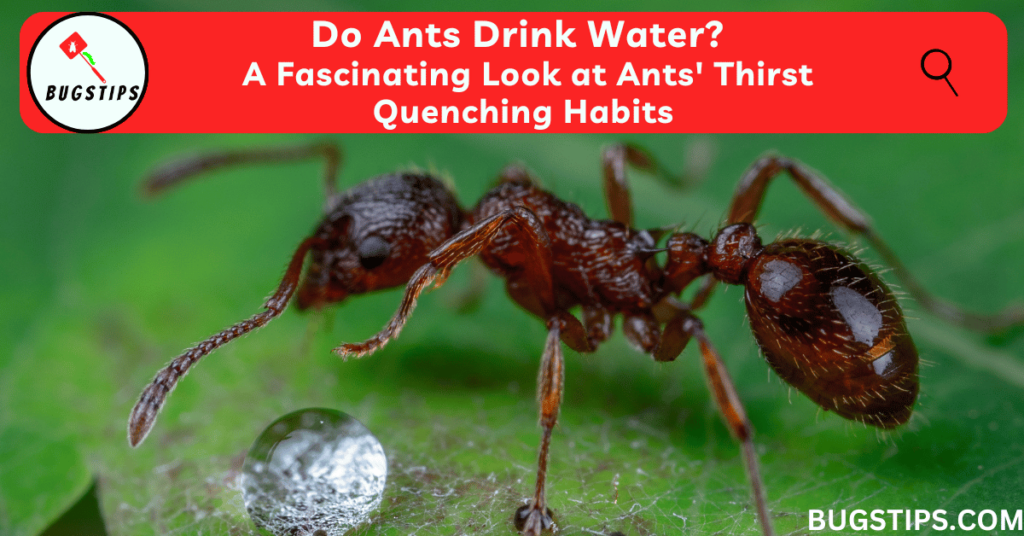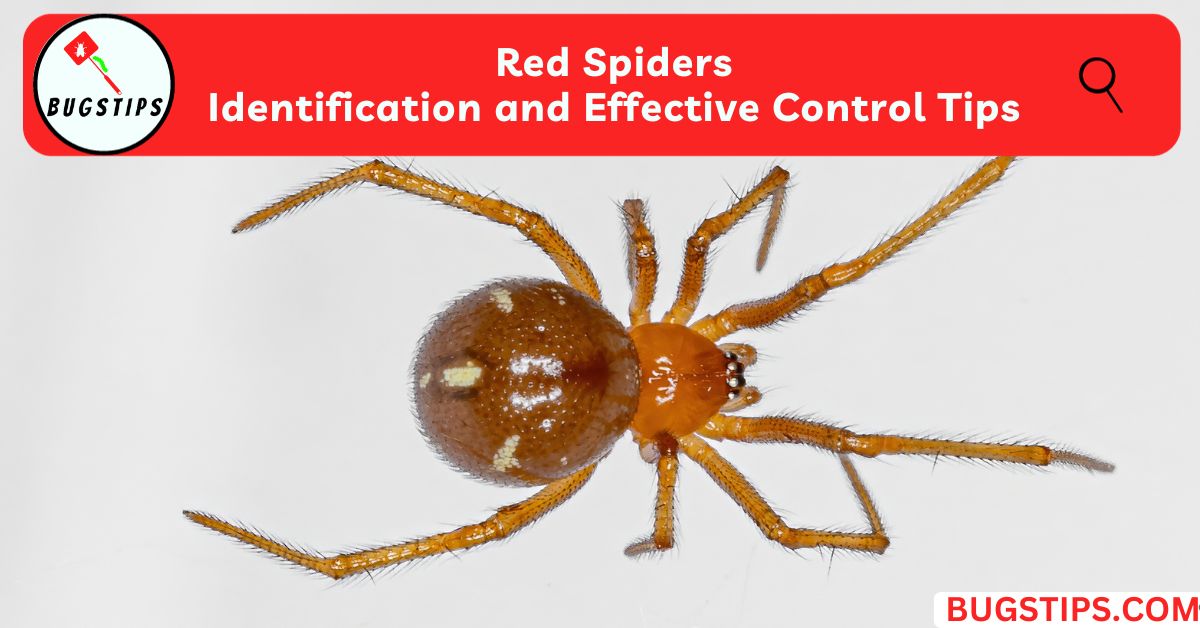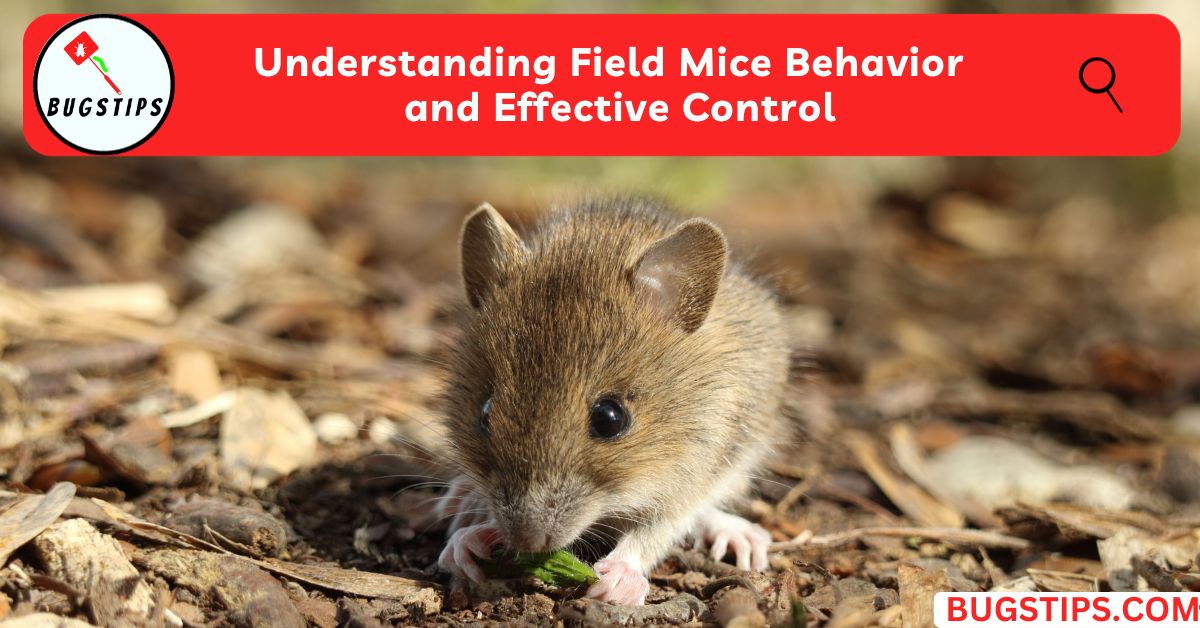This post may contain affiliate links which means as an Amazon Associate, this site may earn a small commission on qualified purchases made through links at no extra cost to you. Learn more on Affiliate Disclosure

Ants are fascinating creatures found in almost every part of the world. These tiny insects can remarkably adapt to their environment and survive in harsh conditions. ants play a vital role in maintaining ecosystems and are responsible for many essential processes, such as seed dispersal and soil aeration.
But do ants drink water? how do ants actually drink water? Where do they find it, and why is it so important to them? In this article, we will explore the answers to these questions and more. From the various ways that ants can drink water to the interesting adaptations they have developed for finding and collecting it, we will delve into the world of ants and their water needs. So, grab a drink (preferably not one that ants are already enjoying) and join us as we discover the wonders of how ants drink water.
How Do Ants Get Water?
Ants are small insects that require water to survive, just like any other living organism. However, unlike humans and other animals, ants cannot rely on drinking water from a glass or a bottle. Instead, ants have developed various strategies to collect and transport water from their environment to their nests.
One of the primary sources of water for ants is rain. During rainfall, ants will position themselves on the surface to collect and drink droplets of water that form on their bodies. Ants also collect water from sources such as dew, condensation, and humid air. Some ant species are known to build special structures near their nests to collect and store water. These structures can range from shallow depressions to complex water-collecting systems that funnel water into underground chambers.
Related Article – Do Ants Drown in Water?
Ants use various strategies to transport water back to their nests. Some ant species use their mandibles to carry droplets of water, while others use their bodies as living sponges to absorb moisture from the environment. Some species of ants have evolved special structures on their bodies, such as hairs and grooves, that help them transport water more efficiently. These structures allow ants to collect and transport water without losing too much of it to evaporation.
Water is crucial for various aspects of ant life. Ants use water for hydration, thermoregulation, and brood development. In hot and dry environments, ants may require more water to cool down their nests and maintain optimal humidity levels for their brood. In some cases, ants may also need water to dissolve and transport food to their nest. Without water, ants would not be able to survive and thrive in their environments.
Related Article – Do Ants Like Heat? The Truth About Ants and Heat:
How Do Ants Drink Water?
Ants have various mechanisms to drink water, depending on their size, behavior, and availability of water sources. Some ants drink water through their mouths, while others can absorb water through their anus or specialized structures on their bodies, such as hairs or grooves. The process of water intake varies among ant species, and some ants even have different drinking methods depending on their developmental stages.
The size and shape of ants play a crucial role in determining how they drink water. Smaller ants may drink water droplets directly or collect them on their bodies and then drink them later. Larger ants, on the other hand, may drink water from larger sources like puddles, streams, or even from water containers. Some ants use their mandibles to scoop up water droplets and carry them to the nest, while others use their bodies to transport water to the nest, acting like a sponge. Additionally, some ants form chains or clusters to reach water sources that are otherwise inaccessible.
The diversity of water-drinking behaviors among ants is significant. For instance, desert ants can survive without direct access to water for long periods by relying on food moisture and metabolic water. In contrast, certain ant species living in wet habitats, like marshes or rainforests, have adapted to drinking water from specialized structures, such as the cuticle of plant leaves or the shells of snails.
So ants have various ways of drinking water, which depend on their size, behavior, and availability of water sources. Their diverse water-drinking mechanisms are a testament to their remarkable adaptation to different environments, which has helped them thrive in many ecosystems across the world.
What Do Fire Ants Drink?
Like all ants, fire ants require water to survive, and they will seek out sources of moisture in their environment. Fire ants have been known to drink from a variety of sources, including dew, plant nectar, and other insects. They may also collect water from rain or irrigation systems and store it in their nests for later use. Fire ants are particularly adept at surviving in dry environments and have developed specialized behaviors and adaptations to help them obtain the water they need to survive.
For example, fire ants have been observed using their bodies to create bridges and rafts to cross bodies of water or to collect water from puddles or other sources. They may also dig tunnels to reach underground water sources or create ventilation systems to help regulate the moisture levels in their nests. By employing these innovative strategies, fire ants are able to thrive in a wide range of environments, from deserts to tropical rainforests.
What Do Black Ants Drink?
Black ants have been observed drinking from a variety of sources, including dew, plant nectar, and other insects. They may also collect water from rain or irrigation systems and store it in their nests for later use.
In addition to drinking water, black ants may also obtain moisture from the food they eat. Many species of ants feed on sugary substances, such as honeydew produced by aphids, which contain high levels of water. By consuming these foods, ants are able to obtain both the energy and moisture they need to survive.
Black ants have also developed specialized behaviors and adaptations to help them obtain water in dry environments. For example, they may create tunnels or chambers in the soil that are lined with moisture-trapping materials, such as pebbles or plant fibers. They may also create ventilation systems that help to regulate the moisture levels in their nests.
Why Do Ants Need Water?
Ants require water for various physiological and ecological functions. One of the primary functions of water for ants is maintaining hydration and regulating ion balance in their bodies. Ants have specialized organs called Malpighian tubules that help them excrete waste and regulate their water balance. They also use water to maintain their internal body temperature and to keep their brood hydrated.
Water availability and quality can greatly affect ant behavior and colony growth. Ants are known to change their foraging patterns and behavior based on the availability and quality of water sources. In drought conditions, ants may alter their foraging routes to search for water, or they may limit the amount of water they consume. In contrast, during wet conditions, ants may increase their water consumption to avoid dehydration.
Water availability also affects the interactions of ants with other organisms. For example, some ant species have been observed tending to aphids, which provide a sugary excretion called honeydew, in exchange for access to their excreted water droplets. In other cases, ants may compete with other organisms for access to water sources, such as in deserts where water is scarce.
Ants have evolved various adaptations to cope with water-related challenges and opportunities. Some ants have specialized body parts, such as water-repellent hairs or grooves on their exoskeleton, that help them collect and transport water more efficiently. Other ants have evolved the ability to survive in water, either by forming rafts or bubbles to float on the water’s surface or by building structures that allow them to stay above water.
Overall, water plays a crucial role in the survival and success of ants, and their adaptations and behavior around water sources are fascinating areas of study.
You’ll Also Like – Do Ants Eat Worms? 8 Fascinating Facts That Will Amaze You!
How Much Can Ants Drink?
Ants have a unique ability to adapt to different environments, including water scarcity. They have developed several mechanisms to obtain and conserve water, which is essential for their survival. Ants can obtain most of the water they need from their food and can drink a surprisingly large amount of water relative to their size.
On average, an ant can drink about seven microliters of water, which is equivalent to 1/5th of a drop of water. However, the amount of water an ant needs depends on various factors, including their size, species, and environment. In arid regions, some ant species have been observed to drink up to ten times their body weight in water in a day to survive.
Ants also have a unique way of conserving water by reducing their water loss through respiration. Unlike humans, ants do not exhale water vapor when they breathe, which helps to conserve water in their bodies. Additionally, some ant species can store water in their bodies, allowing them to survive for extended periods without drinking.
Ants are also known to collect water from dew and rain. Some species have specialized organs, called myrmecophilous organs, which allow them to collect and store water. These organs are located on the ant’s body, and they have a waxy surface that absorbs water droplets. The collected water is then transported to the nest for the colony’s use.
How Do Ants Survive During Floods and Droughts?
Ants have evolved various strategies to cope with water-related challenges such as floods and droughts. During floods, some ant species can form living rafts by linking their bodies together, creating a buoyant structure that allows them to float on the water’s surface. Other species have been observed building structures such as tunnels and arches to avoid submersion. In contrast, during droughts, ants can nest in microhabitats that provide higher humidity levels, such as under rocks or in leaf litter.
Water-related disturbances can have significant impacts on ant populations and ecosystems. For example, flooding can displace ant colonies, leading to changes in their distribution and composition. Droughts can reduce the availability of water, affecting ant behavior, foraging patterns, and reproductive success. Additionally, the alterations in ant populations can have cascading effects on the broader ecosystem, as ants play essential roles in soil health, nutrient cycling, and seed dispersal.
Researchers have studied the interactions between ants and water dynamics in various contexts. For example, studies have investigated the effects of habitat fragmentation on ant responses to flooding events. Other studies have focused on the impact of drought on ant community structure and diversity. These studies have yielded valuable insights into the ways in which ants adapt to water-related challenges and how disturbances affect their populations and ecosystems.
Understanding the interactions between ants and water dynamics can inform conservation and management strategies. For instance, preserving and restoring wetlands and riparian zones can provide important habitats for ant species and help maintain biodiversity. Additionally, managing water resources to balance human needs with the needs of wildlife can help mitigate the impacts of water-related disturbances on ant populations and ecosystems.
Final Thoughts
ants do drink water, but they get most of their hydration from the food they eat. Ants have evolved to be incredibly adaptable and have unique ways of accessing water when needed. Whether it’s collecting water from droplets or using their bodies to create a pathway for water to flow, ants have developed innovative ways to ensure their survival. Understanding how ants survive and thrive in their environments is not only fascinating but also helps us appreciate the complexity of the natural world.
As we continue to learn more about the ways that ants access to water and other resources, we can gain a deeper understanding of how ecosystems function and how we can work to protect and preserve them. So the next time you see a line of ants carrying a drop of water or collecting dew from a leaf, take a moment to appreciate the incredible resilience and resourcefulness of these tiny creatures. After all, ants are much more than just pests – they are complex, fascinating animals that play an essential role in the web of life.
FAQ
Do ants only drink water when they are thirsty?
Yes, ants typically only drink water when they are thirsty. Ants are able to regulate their water intake based on their needs, and they will seek out water sources when they are dehydrated. They are also able to store water in their bodies for later use. but ants may also consume water for other purposes, such as to dilute food or to clean themselves or their nestmates. Overall, ants are able to maintain a balance of hydration in their bodies by drinking water as needed.
Can ants die from dehydration?
Yes, ants can die from dehydration. Like all living organisms, ants require water to maintain their bodily functions. When ants are unable to obtain enough water to meet their hydration needs, they can become dehydrated and experience negative health effects, including death. In dry or arid environments, ants have adapted various strategies to help them conserve water and survive in conditions where water is scarce.
What happens to ants during a drought?
During a drought, ants may struggle to find enough water to meet their hydration needs. This can lead to dehydration and other health issues. Some ant species have adapted to survive in dry conditions by reducing their water needs or entering a state of dormancy until conditions improve. However, prolonged droughts can still have a significant impact on ant populations.
Can ants swim?
Yes, many ant species are capable swimmers. Some ant species have adapted to aquatic environments and can navigate through water with ease. Ants have several mechanisms that help them swim, such as using their legs to paddle and trapping air bubbles on their bodies to increase buoyancy. However, not all ants are good swimmers, and some may struggle or even drown in water.
Can ants drink other liquids besides water?
Yes, ants can drink liquids besides water. Ants have been observed drinking liquids such as nectar, honeydew, and even sugary drinks like soda. but other liquids may not provide the same level of hydration as water does.
Can ants get water from the food they eat?
Yes, ants can obtain water from the food they eat. Many of the foods that ants consume, such as fruits and insects, contain a certain amount of moisture that the ants can extract. This moisture can help supplement the ants’ water needs, especially in dry conditions. However, ants still need to obtain water from other sources, such as rain, dew, and water sources like rivers or puddles, to maintain their bodily functions.
What are the different water requirements of various ant species?
Yes, different ant species have varying water requirements for their survival. Some species require more water, while others need less. On average, an ant in a typical setting consumes approximately 7 microliters of water, which is equivalent to 1/5th of a drop of water.
Do ants drink sugar water?
Yes, some species of ants do drink sugar water. Ants are attracted to sugary substances, such as nectar from flowers, and will consume sugar water if it is available. In fact, sugar water is often used as bait in ant traps to lure and kill ants.
Do ants drink milk?
No, ants do not drink milk. Ants are primarily scavengers and predators, and their diet typically consists of insects, nectar, seeds, and other small organisms. While some species of ants have been observed feeding on sugary liquids, such as honeydew produced by aphids, ants do not consume milk or any other dairy products.
Do ants drink water without drowning?
Yes, ants can drink water without drowning. Ants have a waterproof outer coating on their exoskeleton, which allows them to float on the surface of the water and prevent water from entering their body. and ants are capable of regulating the amount of water they consume, so they do not over-hydrate themselves.
Do ants drink blood?
While some species of ants are known to feed on the blood of other insects, ants do not typically drink blood directly from animals or humans. However, some species of ants, such as army ants, are known to feed on the blood of other animals as part of their diet, and Dracula ants feed on the blood of their young for its nutritional value.
What is the mouthpart of ants called?
Are ants attracted to urine?
Yes, some species of ants are attracted to urine because it contains a variety of nutrients and minerals that they need to survive. However, not all species of ants are attracted to urine, and the extent to which ants are attracted to urine may depend on factors such as the specific composition of the urine and the environmental conditions. It is important to practice proper waste disposal and sanitation to minimize the risk of attracting ants and other pests.
I found some ants in the drinking water. After removing the ants, is the water safe to drink?
In most cases, the presence of ants in your drinking water is not a cause for concern. Ants are attracted to water sources and may accidentally fall in, but they are not known to carry harmful bacteria or viruses that can make humans sick. However, if you are unsure about the safety of your water, it is always a good idea to have it tested by a professional or to use a filtration system to remove any potential contaminants.
If you do find ants in your drinking water, the best course of action is to remove them and thoroughly clean the container to prevent future infestations. Simply empty the water, rinse the container with hot water and soap, and refill it with fresh, clean water. By taking these simple steps, you can ensure that your drinking water remains safe and free from any potential contaminants.
Resources – (for further reading)
Adventures Among Ants: A Global Safari with a Cast of Trillions. – University of California Press, Berkele ,Moffett, M.W. 2010
Fluid intake rates in ants correlate with their feeding habits. – Journal of Insect Physiology, 49(4), 347-357 Paul, J., & Roces, F. (2003)
Desiccation resistance in arboreal and terrestrial ants. – Physiological Entomology, 15 (1): Hood, G. and W.R. Tschinkel. (1990)




